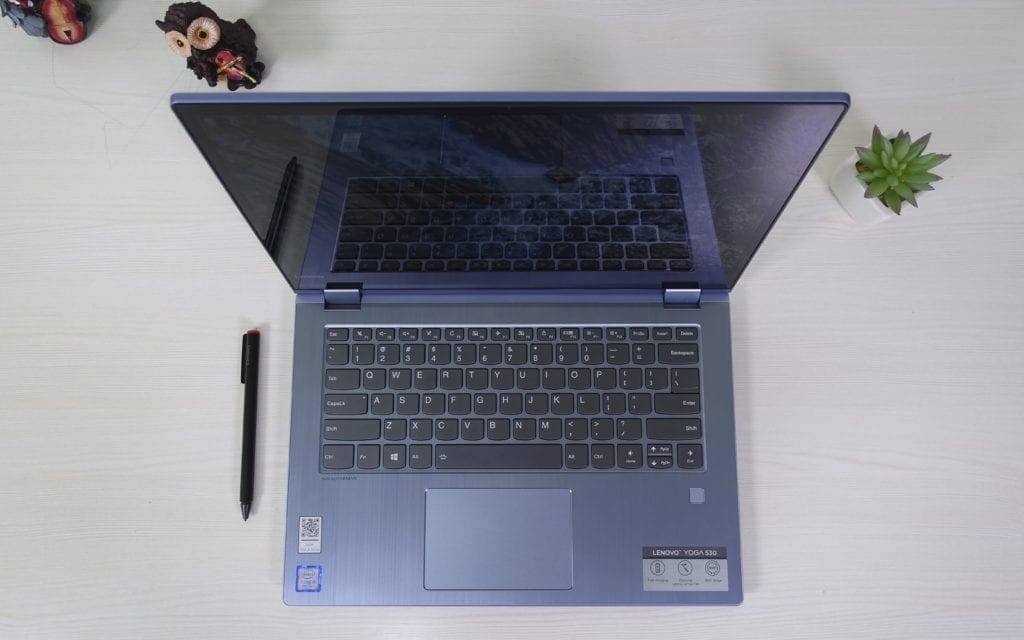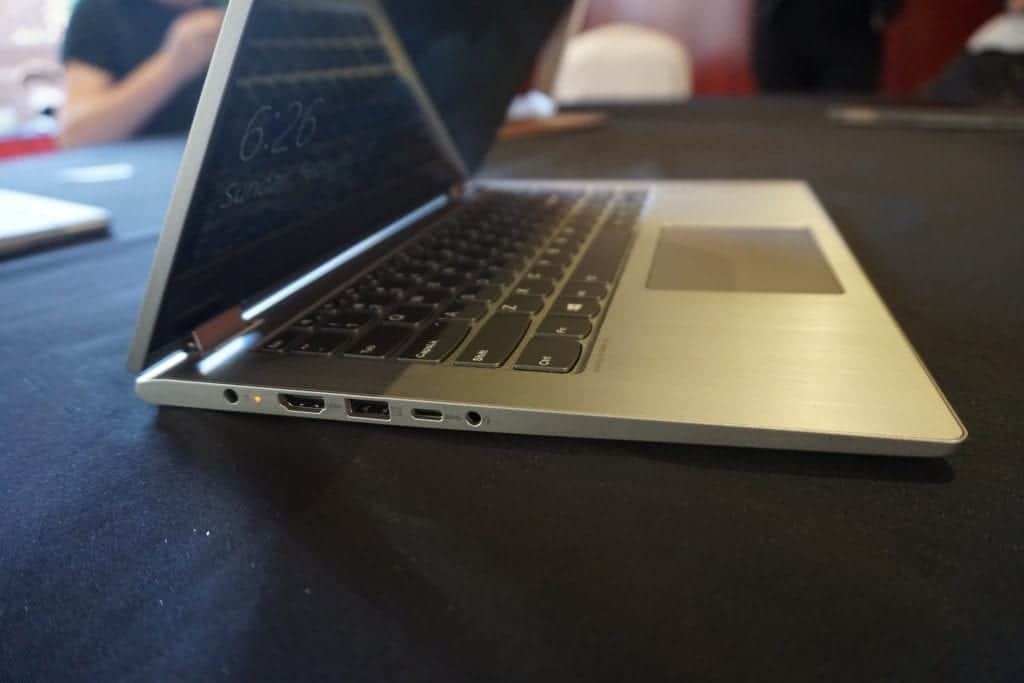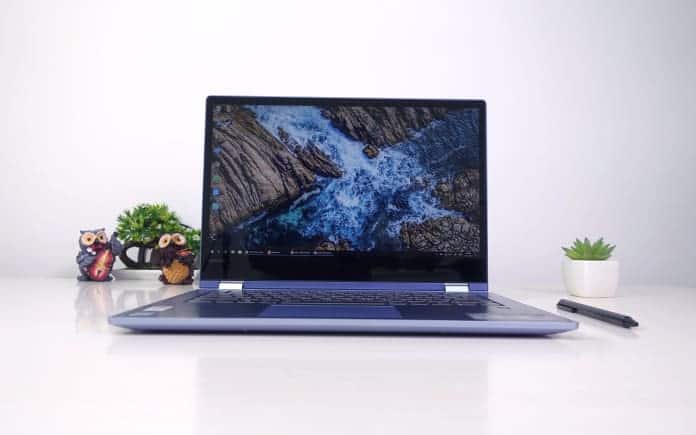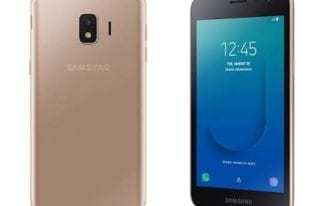
For the first time a Samsung phone offers the Go Edition of Android OS and that was ushered in by the Samsung Galaxy J2 Core. In line with every other entry level smartphones, the features offered are basic. Suutable for beginner users, the smartphone is optimised to make its performance smoother and faster. The build is sturdy and it’s design too is good enough for a smartphone is its calibre. Not entirely meant for heavy lifting, the smartphone handles day to day tasks of watching videos, social media and surfing the web quite well.
Jumia Nigeria – See Offers | Jumia Kenya – See Offers | Jumia Ghana – See Offers
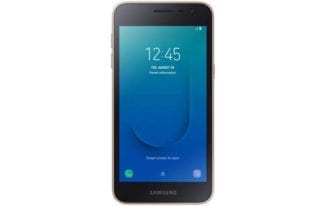
The Samsung Galaxy J2 Core comes with a nice sturdy plastic build with a smooth finish that shimmers in light. The edges are rounded and you can see the camera at the center with a flash at the bottom. Also, the back is removable to reveal a dual SIM slot and a dedicated memory card space and speaker placed to the right of camera. You can get the smartphone in Gold, Blue or Black depending on your taste.
There is not much of a display here to impress you considering the resolution and size of the display. At the top and bottom, you will find a rather large chunk of bezel which is unconventional in modern day smartphones. The 5.0-inch size of the smartphone’s display a is a bit on the low as well as the resolution of 540 x 960 pixels.
Battery and CameraA similar budget story to what most of the bottom shelve smartphones have has regards their battery is what the Samsung Galaxy J2 Core have. The battery is removable and has a capacity of 2, 600mAh which is enough for the day.if usage is kept minimal.
For occasional shots in broad daylight, you can count on the Samsung Galaxy J2 Core to deliver an okay quality according to its level. The rear 8MP camera captures decent pictures in good conditions while the 5MP front camera Is not so good.
Hardware and SoftwareAt the heart of it all, you will find Samsung’s own chipset , although low tier, it still gets the job done. It features an Exynos 7570 with four cores clocking to keep things going smoothly and a Mali-T720 GPU to get graphics going. There’s a 1GB RAM on the snartphobe and a storage space of 8GB expandable to 256GB.. Unlike other Android Go Editions smartphones, there is Samsung Experience UI on top of the Android 8.1 Oreo
Samsung Galaxy J2 Core Pricing and AvailabilityThe smartphone retails for about 32, 000 Naira from online stores and sale hubs around you depending on your location.
Here are a few specs of the Samsung Galaxy J2 Core:
General Features Platform: Android 8.1 Oreo (Go Edition) Processor: Quad-core MediaTek MT6580WP GPU: Mali-T720 Memory: 1GB RAM Colours: Black, Gold, Blue Dimension: 143.4 x 72.1 x 8.9 mm Weight: 154g SIM Type: Nano SIM SIM Count: Dual SIM Display Display: 5.0-inch, IPS LCD capacitive touchscreen, 540 x 960 pixels (220 ppi) Screen Protection: – Camera Rear Camera: 9MP camera, 1080p Video@30fps Rear Camera Features: Autofocus, LED flash, Geo-tagging, touch focus, face detection, panorama Front Camera: 5MP camera, 720p Video@30fps Storage Built-in Storage: 8GB Memory Card Support: Yes, up to 256GB Bundled Cloud Storage: – Network Support 2G GSM: Yes 2G CDMA 1X: – 3G WCDMA: Yes 3G CDMA EVDO: – 4G LTE: Yes Internet & Connectivity GPRS: Yes EDGE: Yes 3G/WCDMA/HSPA: Yes HSPA+: 42.2/5.76 Mbps CDMA EVDO: – 4G LTE: LTE Cat 4 150/50Mbps WLAN: Wi-Fi 802.11 a/b/g/n/ac Wi-Fi Hotspot: Yes Bluetooth: Yes, v4.2 with A2DP, LE NFC: – Infrared Blaster: – USB Port: MicroUSB 2.0 Messaging SMS/MMS: Yes Instant Messaging: Yes Push Emails: Yes Email Protocol: – Entertainment Music Player: MP3/WAV/eAAC+ player Video Player: MP4/H.264 player FM Radio: Yes Loudspeaker: Yes 3.5mm Jack: Yes Navigation Navigation: Yes, with A-GPS, GLONASS, BDS Maps: Yes Sensors & Control Digital Compass: – Accelerometer: Yes Proximity Sensor: Yes Light Sensor: Yes Barometer: – SpO2: – Pedometer: – Heart Rate Monitor: – Gyroscope: – Fingerprint Scanner: – Iris Scanner: – Face Unlock: – Intelligent Digital Assistant: – Motion Sensing / Gesture Control: – Voice Control: – Other Features Video Streaming: Yes Active Noise Cancellation: – Wireless Charging: – Built-in Mobile Payment: – Water Resistant: – Dust Resistant: – Image Editor: Yes Video Editor: Yes Document Viewer: Yes Document Editor: Yes Battery Battery: 2, 600mAh non removable Li-Ion battery Talktime: – Standby Time: – Fast Charging: –The post Samsung Galaxy J2 Core Specs and Price appeared first on Nigeria Technology Guide.
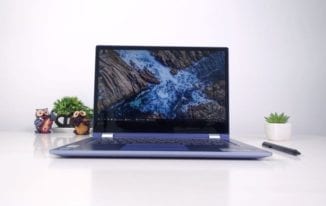
The Lenovo Yoga 530 is an upgrade to the Yoga 520 and the latest addition to the Yoga line of affordable, portable and convertible 2-in-1 PC. Lenovo has worked on the predecessor’s lapses by making the Yoga 530 slimmer and lighter as well as other design improvements that it brings on board. Though the chipset is a bit old, it performs decently and even faster than the Yoga 520. For almost the same price, it is a perfect portable 2-in-1 laptop for students, creatives, and professionals who would love to get some work done on the go.
Albeit there are certain downsides to the device, as a tablet or a PC, it gets the works done; at a price that won’t create a dent in your pocket.
Lenovo Yoga 530 Key Specifications Display — 14-inch FHD (1920 x 1080 pixels) IPS touchscreen Weight — 1.6kg CPU — 8th Gen Intel Core i5-8250U Graphics — Intel UHD Graphics 620 or Nvidia GeForce MX130 Memory — 4GB, 8GB, or 16GB DDR4 Storage — 128GB, 256GB, or 512GB DDR4 Battery — Up to 10 hours Ports — 1 x USB 3.1 type C, 2 x USB 3.0 type A, HDMI, 4-in-1 card reader, 3.5mm DesignThe Yoga 530 comes in a mix of plastic and metal body that manages to give it a premium appearance. The top lid housing the display is covered in finely textured plastic while the bottom chassis housing the keyboard, touchpad, and other components is made of sturdy and tough metal (aluminum). Available in two colour options (Onyx Black and Mineral Grey), the Lenovo Yoga 530 doesn’t disappoint aesthetic-wise.
Keyboard and TouchpadThe keyboard is likewise constructed to be fairly spaced with decent keypress and productivity shortcuts; there are dedicated keys to disable the device’s touchpad, disable webcam, and lock the Yoga 530. Below the keyboard is a smooth Microsoft Precision touchpad that responds decently to touches. All parts of the touchpad are clickable and most part serve as “left click” — only the bottom right corner works as the right click.
To the right of the keyboard is a Windows Hello fingerprint reader which, although poorly positioned, is a convenient way of logging in to your PC. This fingerprint design and placement is similar to that on the Lenovo ThinkPad X380 Yoga.
ConnectivityTalk about connecting hardware or storage disks to the Lenovo Yoga 530, the device is flush with ports. A single USB 3.0 port, one USB-C, 4-in-1 card reader, one HDMI port, and one audio jack occupy the left side of the bottom chassis while on the right side, the power button with LED notification light, Kesington lock port, another USB 3.0 port are located.
One thing to dislike about the Yoga 530 in this aspect is its lack of a ThunderBolt bolt. Considering that a good number of other modern convertible 2-in-1 PCs come with at least one ThunderBolt USB port, the lack of it is a downside to the Lenovo Yoga 530. But then again, the absence of it could be a move by the manufacturer to keep the price of the device down.
DisplayThe Lenovo Yoga 530 comes out of the box with a 14-inch IPS touchscreen display with Full HD (1920 x 1080 pixels) resolution and an included stylus pen. Like previous Yoga notebooks, the out-of-the-box stylus is great addition but unlike the ThinkPad X380 Yoga, it doesn’t come with an in-chassis stowaway port.
The display, however, boast of a decent brightness, contrast, and colour accuracy level that other convertibles in its price range lack but has an unreasonably big bezel at the bottom of the display. This makes it so uncomfortable to use in tablet mode, particularly with one hand.
Processor and SoftwareThe Yoga 530 comes in about four models based on its internal configurations. The base model of the Lenovo Yoga 530 is powered by an 8th Gen Intel Core i5-8250U processor paired with 8GB of DDR4 memory alongside Intel UHD Graphics 620 GPU in charge of graphics. There is another (pricier) model with Nvidia GeForce MX130 2GB graphics card instead of Intel’s UHD GPU.
Per storage, base models comes with 256GB of SSD but there are other smaller (128GB) and bigger (256GB) storage options to choose from. All available models of the Yoga 530 come with Windows 10 Home OS out of the box.
Pricing and AvailabilityThe basic version (8GB RAM, Windows 10 Home, Intel Core i5-8250U processor, and UHD Graphics 620 GPU) of the Lenovo Yoga 530 is available for purchase and comes with a retail price of $549. Price will vary according to the storage and GPU configuration of the device you choose to purchase.
Need a convertible PC with a decent processor, sturdy design and stylus compatible touchscreen display that can conveniently supply 9-10 hours of usage period without breaking the bank? The Lenovo Yoga 530 would be the perfect choice.
The post Lenovo Yoga 530 Key Specs and Price appeared first on Nigeria Technology Guide.

In Africa, the word ‘Blockchain’ was once strange, but now, it is slowly gaining grounds and it’s becoming the engine that will be used in the nearest future to power great innovations that will be embarked on in the continent. Blockchain movement in Africa has followed the usual cryptocurrency trade and different sectors of the economy all over the continent is beginning to envision its relevance and application.
In recent times, Africa has been taking giant steps in leading happenings in the world, so it is not a surprise that the interest of Africa is now on blockchain technology
Even though blockchain has a decentralized payment, it seems to have caught the attention of the 54 African countries. Although the younger generation seems to be the ones driving the blockchain technology movement.
It has been reported that the government of Kenya has set up a blockchain taskforce that will investigate and look at areas where blockchain could be applied to the government services.
Dr Bitange Ndemo, who is tagged ‘the father of broadband’ in Kenya was chosen to head the taskforce and he is already anticipating and envisioning several sectors of the economy where the blockchain technology could be applied.
Some of them include using blockchain for education, certificate verification, for the nation’s financial transaction and also for management of traffic.
The government of Uganda is already getting ready to apply Blockchain technology in some of its services. Vicente Bagure Waswa, who happen to be the permanent Secretary of the Ministry of ICT in the country made a statement that the Uganda government is well aware of the shift in trend by the world in the implementation of blockchain in various services.
Mr Patrick Mweheire, who is the chairman of Uganda Bankers Association (UBA) and also the managing director of Stanbic Bank said that Uganda banks will adopt the blockchain technology where there is a need to, so as to help lower the operational cost and also reduce the risk.
One major area where blockchain technology will be of great advantage in Africa is the election and voting system. Although the government of Sierra Leone publicly denied that Agora, a Swiss-based blockchain company, had a part to play in its election, it will sure be a welcome development in the country and the continent at large if blockchain technology was introduced in African elections.
For private sectors and also startup communities, the blockchain technology has also not been left out. There has already been the application of the blockchain technology to tackle some of the problems being faced in Africa.
What caught the eye of the African companies is the secure, decentralized and growing digital ledger that facilitates the transactions made by cryptocurrency. Yet some of the governments of some nations are still skeptical about allowing its citizens invest in cryptocurrencies.
An example is Nigeria. Its regulators have cautioned its citizens, and also discouraged them from investing in cryptocurrencies with the reason that virtual currencies aren’t legal but yet crypto activities is still going on in the country.
Startup companies in Africa are integrating the blockchain technology into their system, mostly in the area of secure and transparent transactions, and also solving the continent’s recurrent problems.
And it is already being envisioned in Ghana that the blockchain technology will be introduced in the area of land fraud. Bitland has started digitalizing land by providing land registry services which is going to be built based on bitshare blockchain thereby helping in confirmation of land ownership and transactions.
There have been the emergence of over 15 bitcoin exchanges in the African market and each of these exchanges came with a focus, and that is to provide cheap and efficient trading services to consumers in Africa.
And countries battling with inflation like South Sudan could also benefit from it. Meanwhile, East African investors have already introduced BitPesa, a crytocurrency system to help support cross-border transactions.
And in countries where the government still discourages cryptocurrencies like Nigeria and South Africa, it is fast gaining popularity and there are activists who believe that this new currency can help in stabilizing the economy of the country because the conventional system has not been able to raise the hopes of the people.
In summary, the future of blockchain in Africa looks very bright but it will have to maneuver its way in mapping out the uncharted territories and it’s expected that hurdles like the regulatory and political systems of this territories, the technical disabilities and also lack of awareness could prove to be a hard nut to crack for the blockchain technology.
But if these hurdles could be overcome, blockchain could be the technology that will help to equip smart contracts, bring solutions to security data and digital currencies and many more in the continent.
Related Topics What is a Smart Contract How to Buy and Sell Bitcoin Mining Bitcoins Transfer Money from UK Mobile Banking in Nigeria Mobile Money in Nigeria Internet BankingThe post Blockchain use cases in Africa appeared first on Nigeria Technology Guide.

Over the last decade, social media has evolved from a quirky pastime activity to a defining phenomenon of our everyday lives. We don’t treat our Facebook profiles or Tweeter accounts as standalone features of our personal lives but as a means of expression and communication.
The world seems to be stuck on the growing face of social media, and the new trends and prognoses envision an even stronger bond between humans and the virtual world.
How Social Media became so PopularMost people check their Facebook updates, the latest Tweets and the freshest Instagram posts as soon as they wake up in the morning. During the day, they mix work, chores and even family meals with their quick escapes on social media, and at night they give it a last peek before falling asleep.
At first, people used social media just to get in touch with their friends or family. Globalization and intercultural adaptation have quickly ushered in an age where sharing a photo or your current status is more than meets the eye. Our basic needs for belonging and approval find resolution in social media interaction, and make us feel an appreciated part of a community, albeit a virtual one.
Where is Social Media right now?According to the reviewwind infographic the social media users has grown from from 0.97 billion in 2010 to 2.62 billion in 2018. At the moment, social media has developed into a complex structure that enables socialization and communication on several levels.
Some may use it to meet other people with the same interests, while others build their profiles as part of a networking system that allows them to develop professionally, look for jobs and advance in their careers.
Social media channels are so popular across the world because they are free and have a high level of compatibility. You can access your Facebook page or your LinkedIn account on your smartphone in almost any country if you have a stable internet connection. They also offer you the chance to reach out to celebrities, politicians, authorities and news corporations to communicate in ways that were unthought-of in the past.
Where will Social Media go from here on out?It is difficult to predict what our relationship with Social Media will be next year or a decade from now. Experts believe that current social media platforms will have to evolve quickly to meet the needs of their users or lose ground to up-and-coming channels.
We can only presume that with the advent of virtual reality and augmented reality, our means of communication and expression will keep evolving in exciting and interesting ways.
Checkout the infographic below:

The post The Growing Face of Social Media (An Infographic) appeared first on Nigeria Technology Guide.
